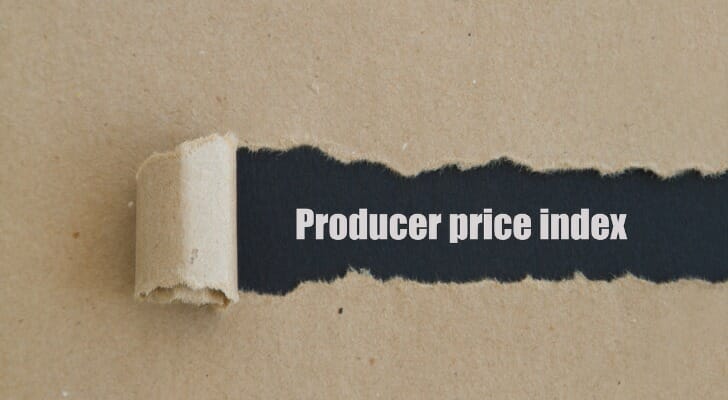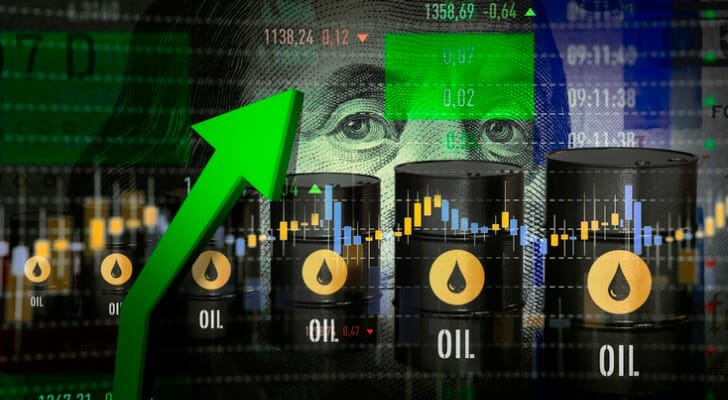 Inflation causes prices of goods and services to increase over time. This increase causes money to have less purchasing power in the future than it does today. It also threatens investment portfolios. Thus, investors seek to beat inflation with higher returns in order to reach their goals. The federal government provides numerous reports that investors use to gauge the threat of inflation and forecast returns. One of the inflation metrics that investors watch is the producer price index (PPI) because it measures the prices that producers receive for selling goods and services. Here’s what it is, why it is important and how it differs from the consumer price index (CPI).
Inflation causes prices of goods and services to increase over time. This increase causes money to have less purchasing power in the future than it does today. It also threatens investment portfolios. Thus, investors seek to beat inflation with higher returns in order to reach their goals. The federal government provides numerous reports that investors use to gauge the threat of inflation and forecast returns. One of the inflation metrics that investors watch is the producer price index (PPI) because it measures the prices that producers receive for selling goods and services. Here’s what it is, why it is important and how it differs from the consumer price index (CPI).
By working with a financial advisor you can sharpen your understanding of economic data and how it relates to your investments.
What Is the Producer Price Index (PPI)?
The PPI is a family of indexes produced by the Bureau of Labor Statistics (BLS) that measures the prices of a fixed set of goods and services over time from the seller’s point of view. It was formerly known as the wholesale price index from 1902 until 1978 when it was renamed the PPI. At this time, it transitioned from being one index for the entire economy to three main indexes that cover different stages of production in the economy.
The federal government releases approximately 10,000 PPIs for individual products each month that cover nearly all sectors of the U.S. economy. These sectors include:
- Agriculture
- Construction
- Electricity
- Fishing
- Forestry
- Manufacturing
- Mining
- Natural gas
- Waste and scrap materials
All told, PPI data points cover about 72% of the service sector’s output.
What Does the PPI Measure?
The PPI is grouped into three major categories – industry, commodity and commodity-based final and intermediate demand (FD-ID).
- Industry Level Classification. This data measures changes in prices for each industry’s net output for goods and services sold to customers outside of the industry. Transactions within the industry cancel each other out.
- Commodity Classification. Goods and services are grouped by similarity and product make-up, then arranged by end-use, product and service.
- Commodity-Based Final Demand-Intermediate Demand (FD-ID). This metric factors in the specific buyer of the products. Final demand measures commodities sold as personal consumption, capital investment, government purchases and exports. Intermediate demand tracks the sale of products that are inputs to production, excluding capital investment.
How Do Investors Use the PPI?
 Government agencies, businesses and investors use PPI data for many different reasons. These uses include monitoring inflation, pricing contracts and adjustments to other economic measures. Investors are primarily concerned with PPI data as an inflation barometer. These reports provide early warnings of coming changes in prices of goods and services. Inflation at the beginning of the product cycles affects everyone down the line until it ultimately reaches the end-user. When producers sell their output at higher rates, wholesalers and retailers must increase their prices in order to maintain their profit margins.
Government agencies, businesses and investors use PPI data for many different reasons. These uses include monitoring inflation, pricing contracts and adjustments to other economic measures. Investors are primarily concerned with PPI data as an inflation barometer. These reports provide early warnings of coming changes in prices of goods and services. Inflation at the beginning of the product cycles affects everyone down the line until it ultimately reaches the end-user. When producers sell their output at higher rates, wholesalers and retailers must increase their prices in order to maintain their profit margins.
When inflation is mild, the Federal Reserve typically maintains the status quo. However, when inflation rises higher than its goal (about 2% as of mid-2021), it may raise interest rates to curtail inflation.
Increases in interest rates can affect companies that an investor owns or is considering an investment in. When rates rise, payments on existing debt can increase, which reduces profitability. The company may also find it harder to borrow for expansion or fund operations making it more challenging to meet growth goals. These negative trends can impact a company’s net income and, ultimately, its value based on a reduction in expected earnings.
How the PPI compares to the CPI
Both of these metrics cover the change in prices of a fixed set of goods and services over time. While the PPI focuses on changes in what producers are able to sell their products for, the CPI focuses on what goods and services cost the end-users of those products.
Beyond that, each index measures a different “basket” of goods and services. The PPI tends to focus more on the raw materials that are used to make products, while the CPI focuses on the actual finished items that we buy at the store. In more technical language, the PPI focuses on the “inputs” of the economy, whereas the CPI focused on the “outputs.”
The Bottom Line

The PPI tracks the change in prices of what producers can sell their products for. There are approximately 10,000 PPIs that represent the majority of our economy. Changes in these PPIs and serves as an early warning system of inflation in the price of commodities and labor that make up the goods and services we buy. Investors use this data to forecast how it will affect the performance of investments in their portfolio and the potential investments that they are evaluating.
Tips for Investing
- Consider working with a financial advisor as you think about the latest PPI and CPI numbers and how you might need to adjust your portfolio accordingly. Finding a financial advisor doesn’t have to be hard. SmartAsset’s matching tool can connect you in minutes to several in your area. If you’re ready, get started now.
- One of the reasons for paying attention to the PPI is to detect signs of inflation. A free inflation calculator can give you a quick estimate of the buying power of the U.S. dollar over time.
Photo credit: ©iStock.com/1001Love, ©iStock.com/sefa ozel, ©iStock.com/deyanarobova